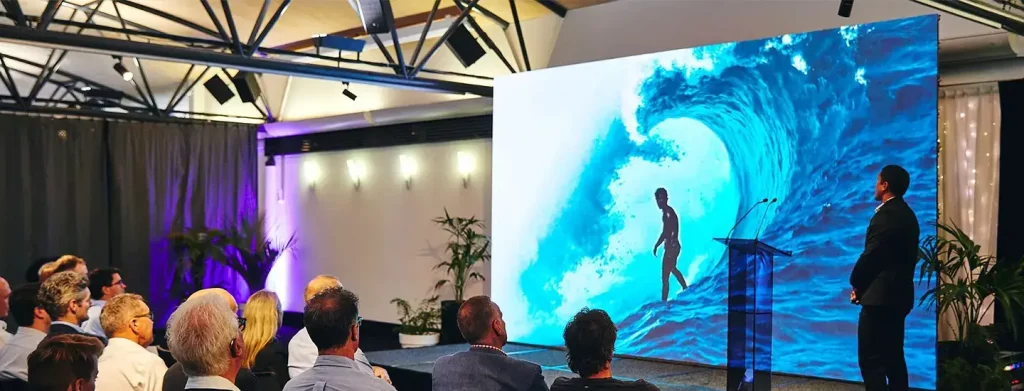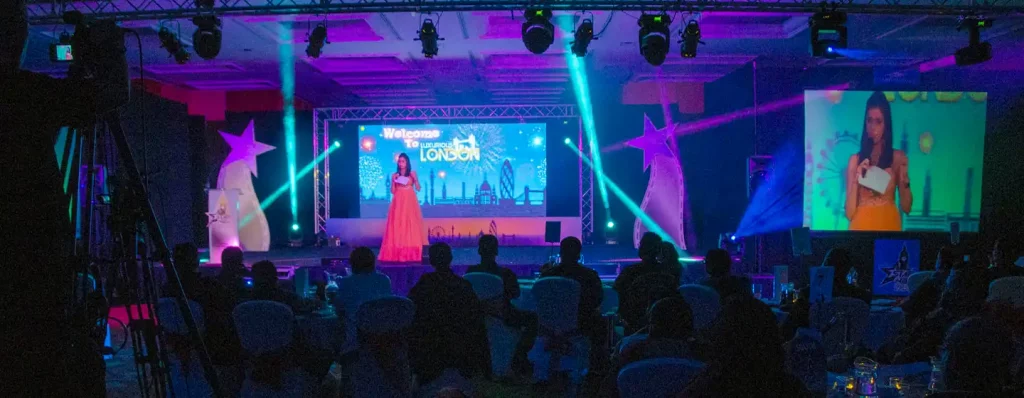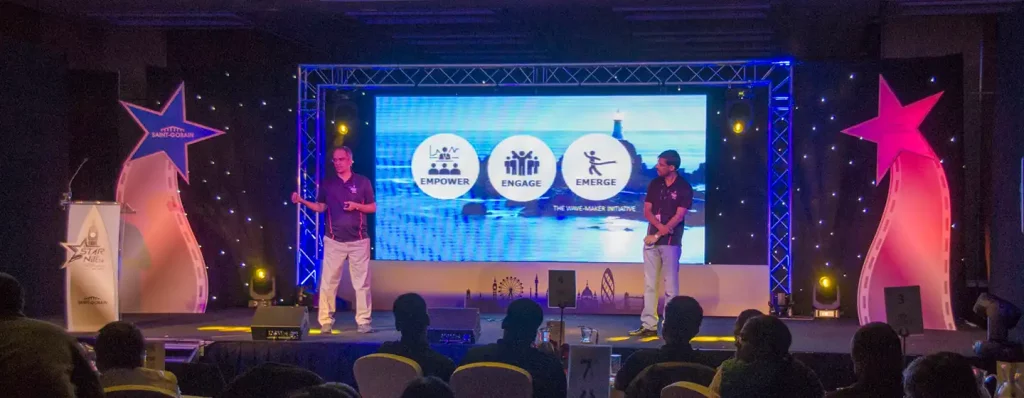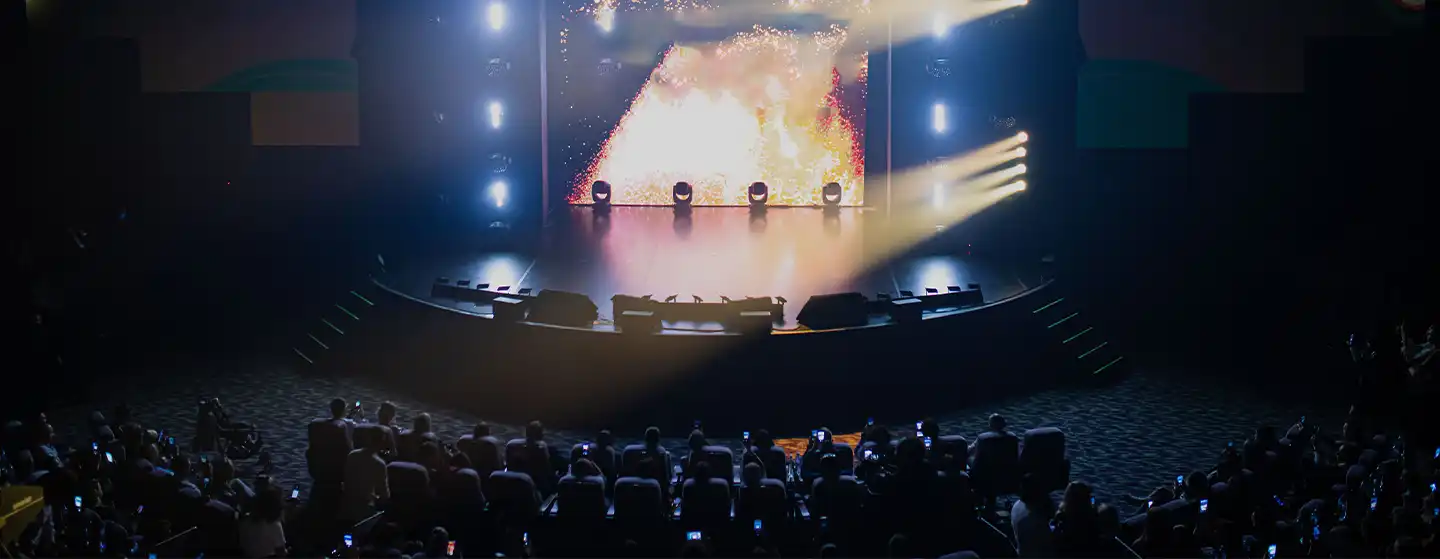LED display technology has taken the digital world by storm. It is gradually becoming a popular alternative to LCD displays and plasma screens and replacing them everywhere. Since LEDs offer higher efficiency, decent brightness, and many other advantages – they are now the first choice for electronic devices. In fact, we are seeing the emergence of a whole new LED video wall hire market across the globe.
LED displays have ameliorated how people interact with their devices. Whether you are watching TV or talking to your loved ones on a video call, LED display technology makes it all happen. This emerging technology has changed the ways of communication and is reshaping the event industry.
If you are wondering how LED technology works and what applications of LED display technology are – sit tight. You will get a profound understanding of LED display technology, its uses and benefits in this blog post. So, let’s dive right in!
What is LED Display Technology?
LED is an acronym for light-emitting diode, a display technology comprising numerous tiny bulbs as a light source. These LED lights contain solid-state materials and generally come in transparent plastic.
LED technology is also known as “cold light technology” because it does not use the old approach where a metal filament was heated to produce light. In contrast, the LEDs have light when current flows through silicon-coated semiconductors. That’s why LEDs are the first choice and are present in many electronic devices, from traffic lights to billboards to remote controls.
Related: How much does it cost to rent an LED LED video wall?

Typically, LED displays interconnect together to create a larger screen to use in several settings, including;
- Award Ceremonies
- Exhibitions
- Conferences
- Fashion Shows
- Product Launches
- Concerts and Supporting Events
- Charity Events
- Shopping Centres
- Retail
- Advertising
How Does an LED Display Technology Work?
The LED display comprises numerous diodes spaced adjacent to each other on a big flat panel. These diodes are of three colours, including green, red, or blue, and can emit light of varying brightness. To create other colours on the spectrum, manufacturers do additive colour mixing.
These three colours are mounted in a rigid pattern in an LED display to generate a pixel. One can make countless colours just by changing the intensity of these three colours.

Technical Bits of LED Technology
To have a profound understanding, there are a few technical bits that you need to be aware of:
LED Display Classification for Different Events
Considering the events’ settings, LED displays can be classified into three categories including;
1. Outdoor LED Display
If you plan to arrange an outdoor event, you should consider weather conditions and changes. The good thing is that LED displays can operate in broad sunlight and heavy rain because they are weather-resistant.
2. Indoor LED Display
Indoor LED displays are smaller in size than outdoor displays and are higher-resolution screens. That’s because the audience is in close seating, and the viewing distance between the audience and the display is short, These displays are ideal for press, indoor charity events, etc.
3. Portable LED Display
Portable LED displays are not fixed and can be transported from one place to another. These are used for business conferences where high-quality graphics are required. Being a temporary indoor display, installing a portable LED display is quick and straightforward.
Portable LED displays are growing in business swiftly due to their easy nature and high quality. The market value of portable LED displays was 5.7 billion U.S. dollars in 2022.

Types of LED Display Technology
The following are types of LED displays and their applications:
- Direct In-Line Package (DIP) LED Display
A DIP display comprises three diodes (red, blue, and green) visible through every display angle. These diodes are placed separately in bubble-shaped LED bulbs. The bubbles are linked by using a connector.
- Surface Mount Device (SMD) LED Display
An SMD display comprises three diodes (red, blue, and green) encapsulated in a tiny plastic capsule and mounted directly on a circuit board. They are known to produce higher-resolution displays because of their less spacing.
- Chip-on-Board (CoB) LED Display
A CoB display comprises a solo device having multiple LED chips placed on a thermally active underlayer below a thorough phosphorus coating. CoB display technology is an excellent choice for a wide area to produce even light.
| Characteristics | DIP LED Technology | SMD LED Technology | CoB LED Technology |
| No. of diodes | 3 (red, blue, and green) | 3 (red, blue, and green) within an LED capsule | 9 or more |
| Lumens per Watt | 35 – 80 | 50 – 100 | 80 – 150 |
| Brightness Level | Highest | Medium | High |
| Viewing Angle | Narrow | Wide | Wide |
| Light Level | Medium | High | Highest |
| Pixel Pitch | 6 – 20 | 1 – 10 | 0.7 – 2.5 |
| Heat Dissipation | Medium | High | Highest |
| IP Rating | High | Medium | High |
| Uses | Billboards, Outdoor Events | Indoor Events like Conferences | Mini and Micro LED Display and Indoor Events |
Characteristics of Different Types of LED Display Technology
Pixel Pitch
It is the distance between two closely spaced pixels on the panel. The shorter the pixel pitch is, the higher the resolution.
Pixel Density
It is the number of pixels placed on an area of the screen and measured in pixels per inch (ppi). With the increase in pixel density, the image quality increases and vice versa.
Scan Rate
It is the ratio that shows the number of LED light arrays at a certain point. For example, if the scan rate is 1:16, it depicts that 1/16th of the LEDs are activated at the moment.
Viewing Angle
It showcases the maximum position from where the audience can see the screen and content clearly. It is the angle from the middle of the display where brightness is less than 50% of the nominal. Therefore, your content will speak for itself, engaging the whole audience.
Future Trends of LED Display Technology
Considering the advancements, the future of LED technology is brighter and incredible. The popularity of LED displays has been increasing due to numerous contributing factors. The major driving force behind the usability of LED displays is their inculcation in almost every electronic device today.
LED displays are not limited to televisions but are used on larger scales for bigger purposes. Whether it’s a conference or an award show, you need a bigger screen to include your audience, and that’s where LED displays have your back. This technology is very diverse as compared to the previous solutions available.
The global market value of LED displays in 2022 was 6954.73 million USD, and it is expected to rise by 8.17% by 2028, around 11143.7 million USD.

Final Takeaway
LED technology has been emerging every day. These displays are very efficient and do not consume much electricity compared to the old-fashioned approaches. Whether it’s an outdoor or an indoor event, these displays never fail to produce the right amount of brightness. Therefore, LED technology will serve you well if you are looking for an efficient source.

